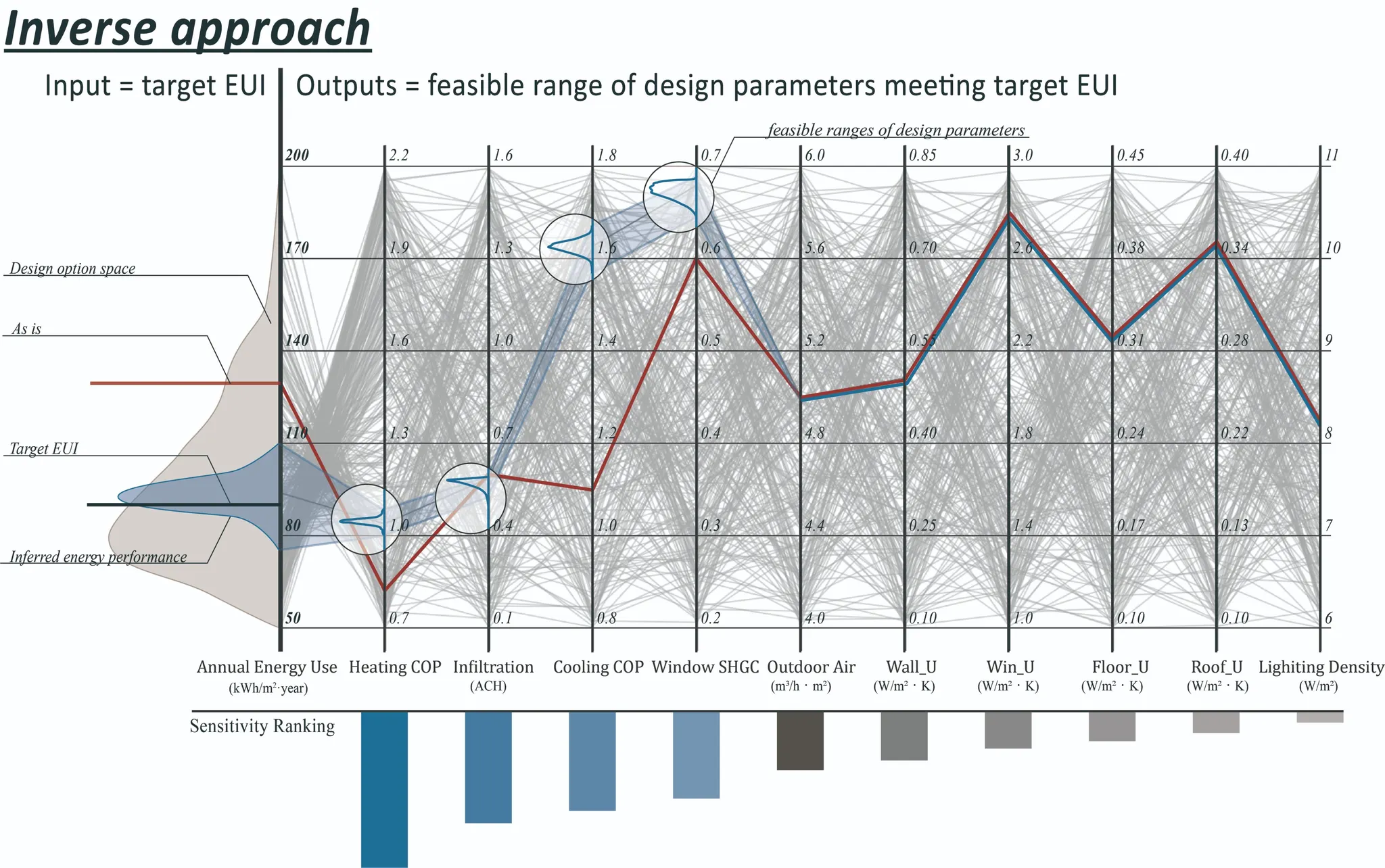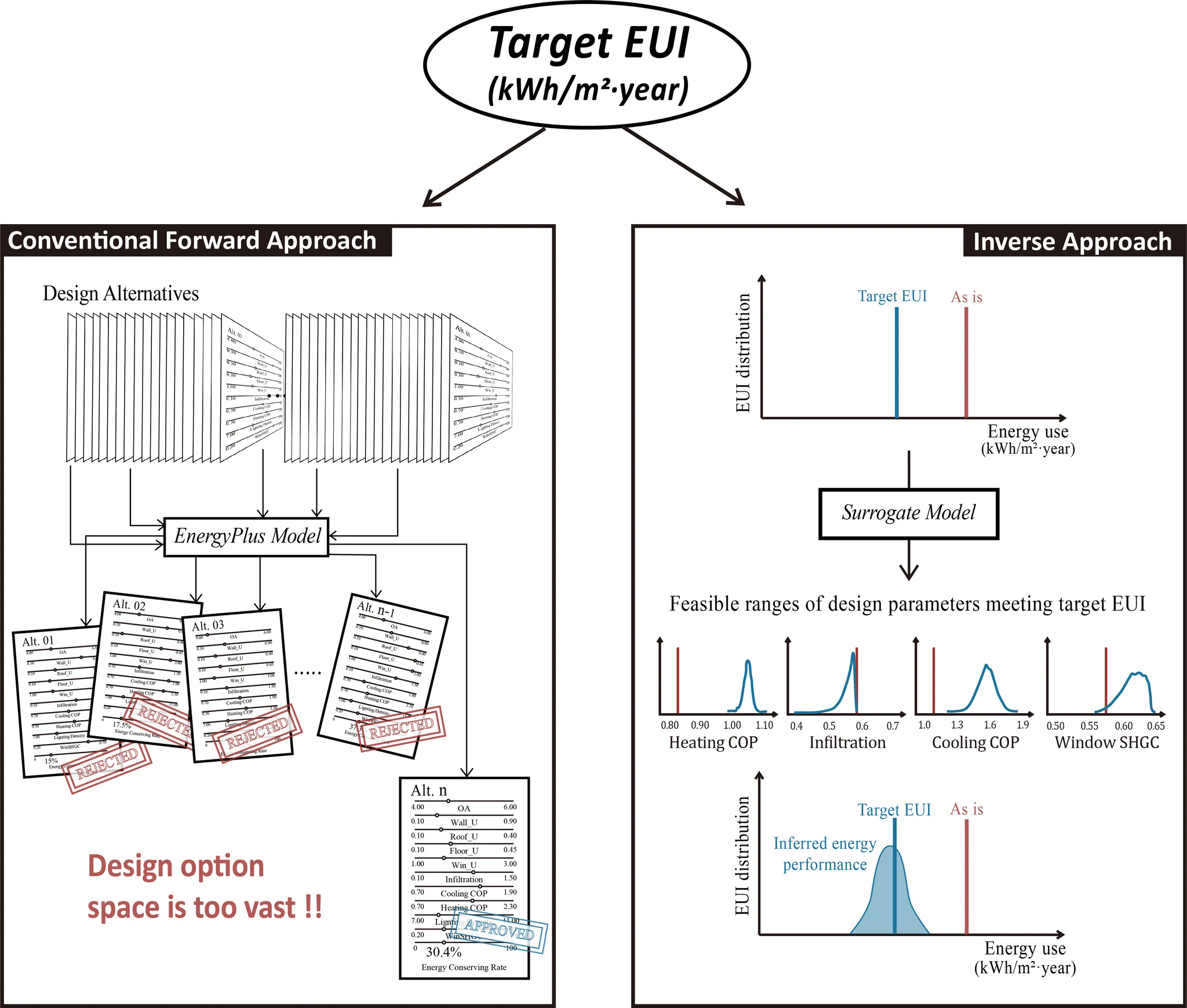•
Summary
In the forward approach where design parameters are input and EUI is output, the number of possible design solutions is too many to conduct an exhaustive search because multiple continuous and discrete design parameters are involved. In addition, the impact of each design parameter on EUI must be identified for time-efficient search of design solutions. In contrast to the forward approach, target EUI is input and feasible ranges of design parameters are output in the inverse approach. The inverse approach can be used for rapid exploration of design solutions and rational decision making. For this purpose, this case study was intended to generate feasible ranges of design parameters that meet a target EUI (90 kwh/m2/yr) and a 30% energy savings target of an existing education building. As a result, what follows is found: (1) sensitivity ranking of significant design parameters of the existing building, (2) feasible ranges of design parameters meeting target EUI, and (3) inferred energy performance of the existing building after energy retrofit.
•
Motivation
•
Methodology
•
For more detailed, visit the followings:






